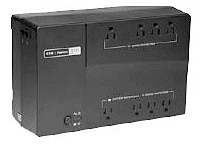
Forecasts say that online sales will grow in 2008, even in the current economy. Are you going to get your share? Eliminating as much cart abandonment as possible will definitely help. As you plan for the season, your shipping system can give you the information you need to make your final price right for your customers. Make them click "Buy" instead of "Bye".
For the same order, do you charge different amounts for shipping depending on the package destination? That makes your price different according to where your customer lives. If you visit you local Sears store, they don’t ask for your ZIP code before you get the price. Yes, that's a little different situation, but no one likes to know they are paying more than someone else for the same item. That's a key factor that creates abandoned shopping carts.
It's clear that flat rate shipping, strategically mixed with "free" shipping offers, combats this problem. It has been found by a number of experts and Internet entrepreneurs that it is very important to display shipping charges before checking out to avoid shopping cart abandonment. Now, how to do this?
Of course, free shipping is very easy to calculate. Figuring out the right amount for flat-rate shipping is easy but takes a little more effort. The easiest way is to use your actual carrier rates in your shipping system, then use historical reporting directly from the shipping system. As an example, the CPS shipping software can use actual carrier rates, including contract specific rates that reflect the fuel surcharge. CPS provides a report (
Click here to see a sample CPS Flat Rate Shipping Charge Report…) showing average shipping cost per package and average shipping cost per pound. These costs are also then split into next day, 2 day, 3 day, ground and international services. With just a few mouse clicks you can keep tabs on your shipping costs for any period of time by carrier and service to accurately manage your flat rate shipping offer.
Of course you can get these same numbers from the carrier bills, but its so much easier if you can just "Click" and see them. The example above is for CPS, but look for similar reporting in your shipping system. Monitor your costs at least monthly and make adjustments for changes in average charges. When using flat rate charges you can offer free shipping for special times of the year like holidays when competing for consumer dollars.
When you look at customer satisfaction and shopping cart abandonment issues, one might conclude that free shipping is the only way to go. This may not be the best approach for a couple of reasons, especially for the bottom line. Using flat rate shipping charges for low volume orders, then using free shipping to increase the order amount are effective ways to increase sales, decrease shopping cart abandonment and increase your return customer rate. When done properly, this leads to increased profits. In addition, if you offer only free shipping you have to build the shipping cost into the item cost. This means you have to change item costs on a regular basis to offset the shipping price increases brought about by fuel surcharges - inconvenient for you and confusing for your customers.
Use your shipping history reporting tool to monitor your average shipping costs and you can successfully use flat-rate or flat-rate and free shipping. Quick, easily available reporting from your shipping system lets you make sure you are making enough to break even for total shipping charges either way.
 One day after our Blog posting on “How You Can Save Oil”, UPS released its sixth annual Corporate Sustainability Report with progress reports on the company's economic, social and environmental performance. The report is posted at sustainability.ups.com.
One day after our Blog posting on “How You Can Save Oil”, UPS released its sixth annual Corporate Sustainability Report with progress reports on the company's economic, social and environmental performance. The report is posted at sustainability.ups.com.


